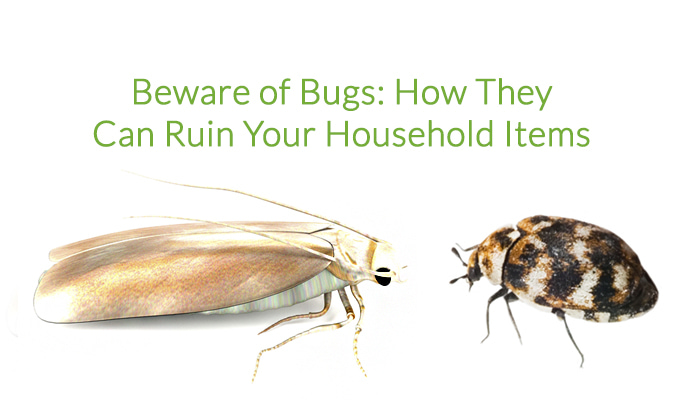
Beware of Bugs: How They Can Ruin Household Items
February 10, 2015
While clothes moths tend to take the rap for insect damage on clothes and other household fabrics, carpet beetles are their partner in crime and often equally responsible for the damages. Continue reading as Preferred Pest Control explains why these insects are attracted to some fabrics and not others. Don't let them take over your home and ruin your possessions.
What Fabrics Attract Carpet Beetles and Clothes Moths?
Clothes moths and carpet beetles are considered "scavengers." This title means they feed on a variety of animal products including wool, hair, fur, silk, felt and feathers just to name a few. Clothes moths and carpet beetles are also attracted to dried meat and dead bugs, insects and taxidermied animals.
From sweaters to blankets, furniture and everything in between carpet beetles and clothes moths will feed on anything with an animal product in it including blended materials. These insects are also more attracted to fabrics with sweat stains or high concentrations of sweat buildups as well as urine stains or buildups.
If these fabrics and materials are in dark, secluded places, they are even more inviting for clothes moths and carpet beetles because they can feed and lay eggs without being disrupted.
Carpet Beetle Life Cycle and Appearance
Adult carpet beetles are between 1/8 and ||special188|| inch long and range in color from dark black and a two-tone light and dark brown. The female adults lay their eggs directly on food sources that are in dark or secluded locations.
Carpet beetle eggs usually hatch within two weeks of being laid. During the larval stage, they consume and damage sweaters, rugs, furs and other belongings. Carpet beetle larvae, when mature, are longer than their adult form. There are multiple kinds of carpet beetles found in Iowa. Black carpet beetle larvae look like tan or caramel worms; varied and furniture carpet beetle larvae are various shades of brown with tufts of fine hair covering their bodies.
Clothes Moth Life Cycle and Appearance
Adult clothes moths are usually around ||special188|| inch long and are a pale, yellowish brown. Once they reach the adult stage, they no longer damage household items their only purpose is to produce young. Female clothes moths will lay between 40 to 50 eggs in two to three weeks. Once this cycle is complete, they pass away.
Young clothes moths have two stages after hatching. First, they are larvae; this is when they damage your rugs, clothes and other belongings. During this stage, they look like small off-white worms with darker tan heads. This larvae stage can last anywhere from 30 days to 2 and a half years. During this time, they will molt five to 45 times while they continue to feed off of fabrics throughout your home.
After the larvae stage comes the pupa stage. Clothes moth pupa look like off-white or beige hard casings that are smaller than a pencil. This stage can take anywhere from a week to a month depending on the weather, humidity and other climate factors. For most clothes moths, they will achieve the full life cycle within six months, and two generations of clothes moths will feed on the materials in a home within a 1-year time frame.
Preferred Pest Control
Infestations of carpet moths and clothes beetles are hard to control because by the time you notice their presence they have already laid eggs, had young and started multiplying again. It is important to eliminate them as quickly as possible before they have a chance to ruin more of your beloved household items and clothes. At the first sign of damage, call the Iowa experts at Preferred Pest Control for
efficient, effective clothes moth or carpet beetle removal!